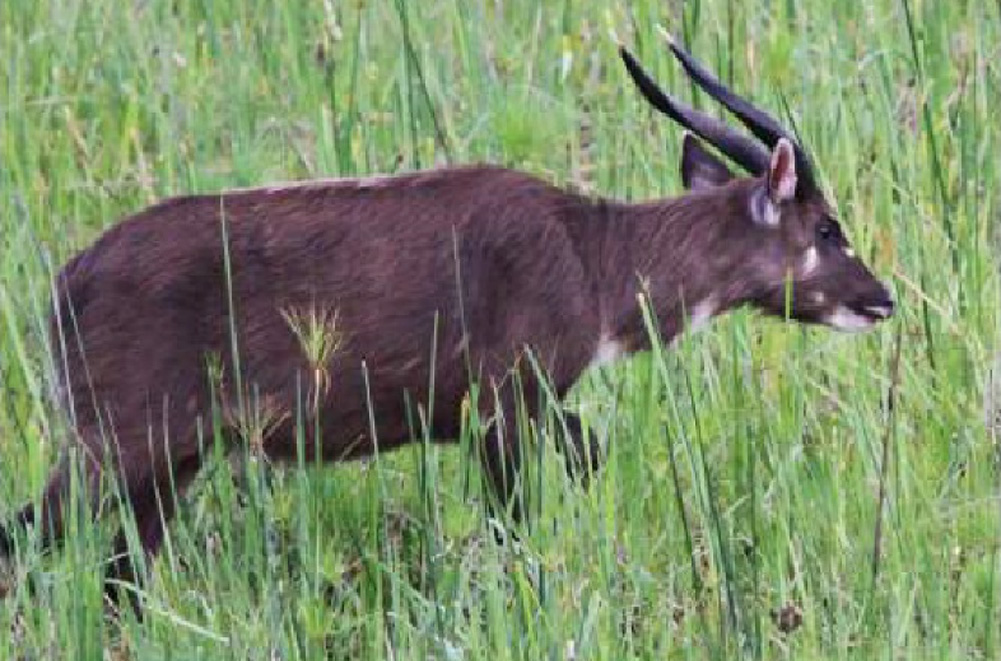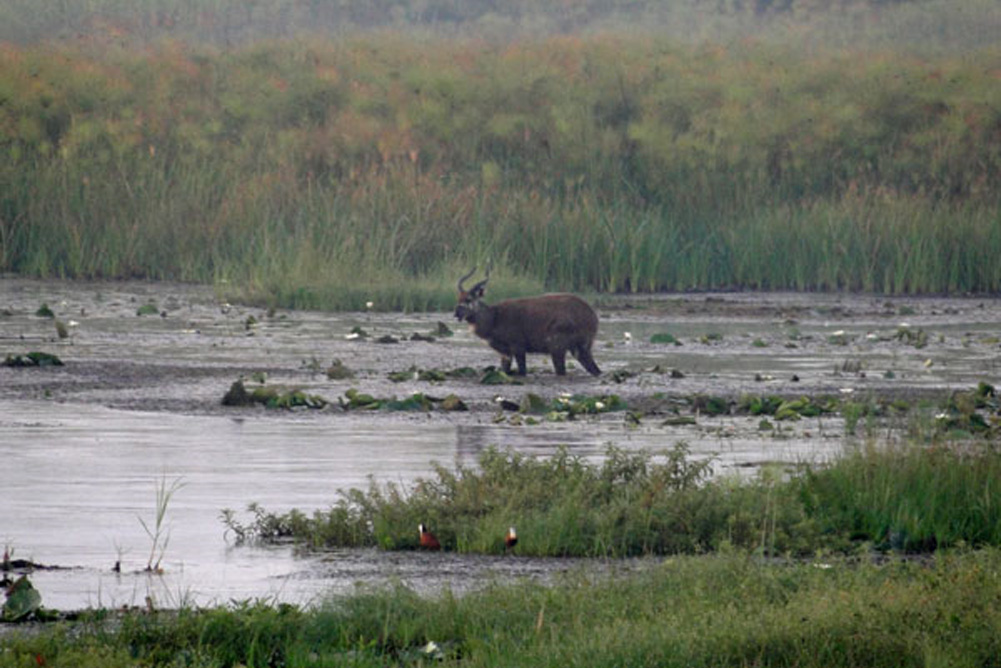Uganda Sitatunga Population Size and Ecology
There is little scientific data available on whether the sitatunga prefers dense wetland vegetation or crop-raiding from dry land adjacent to rivers. Equally mysterious are the movements of males and females during the wet and dry seasons.
In order to address the gaps in scientific knowledge and help ensure the sustainability of sitatunga hunting in Uganda, SCI Foundation has recently begun a research program in partnership with the University of Alberta. The Uganda Sitatunga Project aims to utilize radio telemetry, mark-resight population estimation, and genetic analysis to fill the data gap which makes this species so difficult to manage.


Species involved: Sitatunga
Project partner: University of Alberta: Department of Biological Sciences and Uganda Wildlife Authority
Total SCIF Investment: $25,000 (With help from HLF) (Total need: $25,000)
Year SCIF began involvement: 2017 (Timeline: 2015-2017)
Project Objectives
- Estimate home range and density of adult Sitatunga in Uganda Mayanja River system in Uganda.
- Use GPS collars and genetic testing to evaluate movements among Sitatunga populations in Uganda.
Anticipated Outcomes
The results of this study will be used to guide management decisions and harvest quotas for this game species. Identification of important habitat, movement corridors, and connectivity will aid in the effective administration of sitatunga conservation across their range. By expanding on existing wildlife management techniques, new data from this project will motivate landowners to conserve wetlands and contribute to the sustainable economy of well-regulated hunting.
Recent Project Update
We received an annual progress report from Ph.D. student Camille Warbington at the University of Alberta. The sitatunga is a wetland‐dwelling antelope native to central Africa with spiral horns. They are particularly associated with the expansive papyrus marshes present along many river basins in the region. Despite a broad range and popularity in the safari industry, the basic ecology of sitatunga is poorly understood. This study quantified abundance using camera traps and mark‐recapture analysis. Camille also conducted surveys of preferred feeding areas and collected tissue samples for population genetic analyses. Fieldwork on the project in Uganda is now complete, and she is back in Canada analyzing her data and preparing her dissertation.

Since 2000, SCI Foundation has provided more than $80 million to promote science-based conservation through wildlife research, capacity building in governments, youth and teacher education, and humanitarian programs that show the importance of the hunting community in society around the world. Growth of SCI Foundation has continued to gain momentum through charitable donations from SCI members and direct grants from local chapters and the SCI organization. Throughout the world, SCI’s approximately 50,000 members and 190 chapters contribute time, talent, and financial support to local, national, and international projects.
